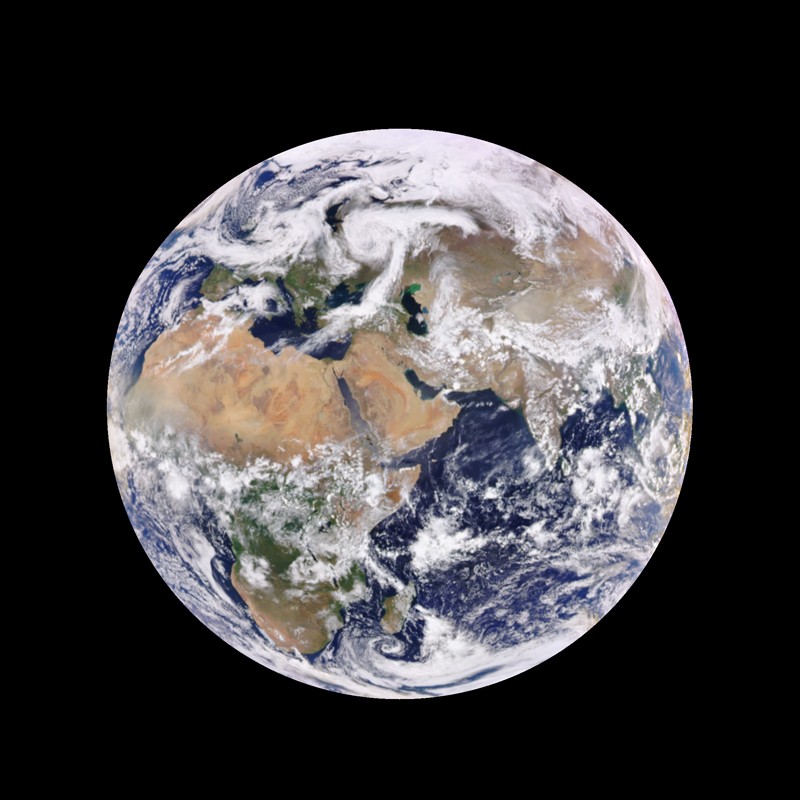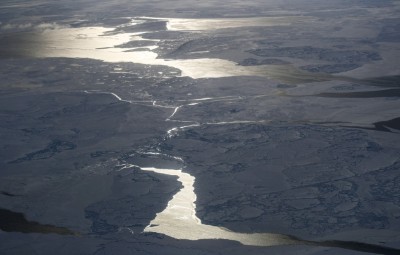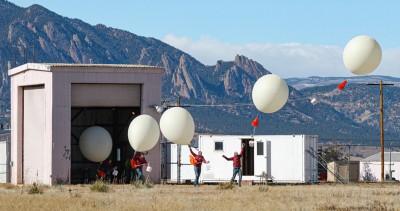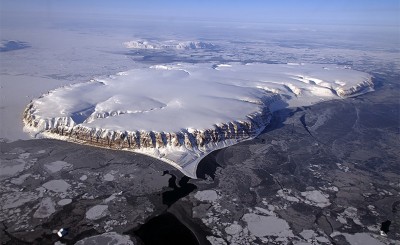NASA is best known for exploring other worlds, whether that’s sending astronauts to the Moon or flying helicopters on Mars. But under US President Joe Biden, the space agency intends to boost its reputation as a major player in studying Earth — especially with an eye towards fighting climate change.
“Biden made clear that climate is a priority,” says Waleed Abdalati, director of the Cooperative Institute for Research in Environmental Sciences in Boulder, Colorado. “There’s a clear role for NASA to play in that,” he says, given all the Earth-science research it funds and the Earth-observing satellites it launches.
In recent months, NASA has signalled its intention to reinvigorate its role in informing US climate policy, by appointing its first climate adviser and ramping up work on key missions to study how Earth’s climate is changing.
The work is particularly crucial as climate change accelerates, agency officials say. “The demand for actionable information is going to increase pretty dramatically over the next decade or two,” says Karen St. Germain, head of NASA’s Earth-science division in Washington DC.
Monitoring change
Among the many US federal agencies that Biden has conscripted to curb climate change, NASA stands out because it is a leader in basic planetary discoveries. Its history of Earth observation stretches back to 1960, when it launched the TIROS-1 satellite to test the feasibility of monitoring weather from space. Over more than six decades, NASA has designed, built and launched spacecraft to observe Earth as it changes. Often working in concert with the US National Oceanic and Atmospheric Administration (NOAA), which has primary responsibility for national weather forecasting, NASA runs satellites that measure ice sheets melting and carbon dioxide flowing through the atmosphere. The agency also flies aeroplanes to gather data about planetary change and funds a broad array of fundamental climate research, such as climate-modelling studies. “Our central role is in understanding how the Earth system is changing,” says St. Germain.
Biden’s predecessor, Donald Trump, whose policies favoured industry and downplayed climate change, repeatedly tried to cancel major NASA Earth-science missions, only to see them rescued by Congress. It was part of a broader pattern across the Trump administration of undercutting climate-change research and policy. NASA escaped the worst of those attacks by keeping most of its climate-change and Earth-science research below the radar of Trump officials. But it was a politically fraught time for the agency.
Now, NASA is literally reclaiming its seat at the table. Biden initially left the agency off the high-level climate task force he established a week after taking office in January. Following some pointed phone calls, NASA muscled its way into that group, and is now represented alongside administration heavyweights such as the secretaries of the treasury and defence as they discuss the nation’s climate strategy.
“If you’re going to make policy related to scientific questions, you need to have science at the table,” says Gavin Schmidt, a climate modeller at NASA’s Goddard Institute for Space Studies in New York City and the agency’s new climate adviser.
NASA’s new administrator, former senator Bill Nelson, has said that he supports the agency’s Earth-science research. “You can’t mitigate climate change unless you measure it, and that’s NASA’s expertise,” he said at his Senate confirmation hearing on 21 April.
Budget struggles
Among NASA’s epic observations of climate change are a 29-year programme recording global sea-level rise, measured precisely from space with French and other collaborators, and studies that began in 2002 to track ice loss from Greenland and Antarctica, done with German partners. Upcoming missions include a US-India radar satellite that will track planetary changes such as shifts in sea-ice cover, and a US-Canadian-French-UK spacecraft that will survey freshwater resources and ocean currents. Both are slated to launch next year.
But NASA has struggled to get some of its most anticipated climate missions under way. It intends to launch a series of spacecraft that would measure fundamental aspects of global warming, such as shifts in clouds and precipitation, and changes in Earth’s mass as groundwater dries up. These missions were shaped by an influential 2018 report from the US National Academies of Sciences, Engineering, and Medicine, which named five ‘designated observables’ that NASA should track. Collectively, NASA calls them an Earth system observatory; they would help scientists to continue to track global change, and give policymakers data they need to inform actions on climate change.
The report estimated that the necessary missions might cost between US$300 million and $800 million apiece, and suggested that they might be doable even with tight budgets. NASA’s annual Earth-science budget has hovered around $2 billion for years, even as other agency programmes, such as planetary sciences, received huge funding increases.
In April, Biden proposed boosting NASA’s Earth-sciences budget to nearly $2.3 billion, although Congress would need to approve it. “It’s a big help and I’m supportive of it,” says Abdalati, who previously served as NASA’s chief scientist and also co-led the 2018 National Academies report. But “as a result of underinvestment for so many years, it looks better than it is”. (NOAA also got a proposed boost of around $500 million for its own line of weather and climate satellites.)
Making ends meet
Despite its budgetary struggles, NASA has managed to continue doing climate science in the past few years. It scraped together money to start work on a new instrument called Libera, which will launch in 2027 to measure solar radiation, so that the agency can maintain a crucial four-decade record of how much heat Earth’s atmosphere absorbs. But it hasn’t made the progress it would have liked on monitoring the designated observables. “Over the last year, we’ve been in an especially challenging environment with COVID,” says St. Germain.
The agency has been trying to save money and speed things up by working with partners such as commercial companies. Sometimes that has worked well. For instance, the agency set up a programme to buy Earth-observation data from satellite companies and make the information available to NASA-funded researchers, to complement measurements from government satellites. At other times, NASA has been left in the lurch. For example, the agency planned several years ago to pay for a ride on commercial satellite launches for some of its spacecraft that needed to reach geostationary orbit, a relatively high vantage point above Earth. But then the commercial satellite operators changed their plans, leaving a pollution-monitoring spacecraft called TEMPO and a carbon-mapping mission called GeoCarb scrambling for new rides to space.
If Congress approves a significant boost for NASA’s Earth-science division, then the agency might finally be able to accelerate progress on satellites to track climate change. The funding decision is expected in the coming months.
“The switch in administration now means that we can actually start to implement some of these missions,” says Helen Fricker, a glaciologist at the Scripps Institution of Oceanography in La Jolla, California, who studies Antarctic ice loss. “We can make up for lost time and get on with it.”
"in" - Google News
May 08, 2021 at 12:15AM
https://ift.tt/3tsQ4Rp
NASA reboots its role in fighting climate change - Nature.com
"in" - Google News
https://ift.tt/2MLa3Y1
https://ift.tt/2YrnuUx
Bagikan Berita Ini




















0 Response to "NASA reboots its role in fighting climate change - Nature.com"
Post a Comment